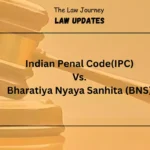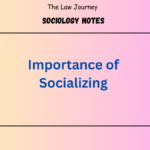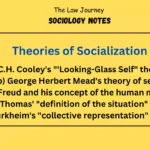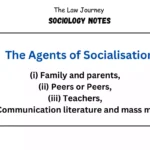There was a growing demand for constitutional reforms in india by indian leaders. India’s support for Britain during World War I also increased British recognition of the need for more Indians to be involved in the government of their own country.
The Government of India Act, 1935 was based on the facts and considerations of several experiences and outcomes, including the Simon Commission report, round table conference recommendations, the British government’s white paper published in 1933 (based on the third round table conference), and the report of the joint select committees.the introduction of the diarchy system, introduced by the government of india act. 1919, also did not prove to be a satisfactory experiment by the british parliament.
brief highlights of the events and causes leading to the enactment of the government of india act,1935:
a. Simon Commission Report: The Simon Commission was a group of seven British parliamentarians sent to India in 1928 to explore constitutional issues and give recommendations to the government. Originally known as the Indian Statutory Commission, the Simon Commission was named after its head, Sir Iohn Simon.
b. round table conferences: In 1929, the Labour Party-led government led by Ramsay Macdonald found the Simon Report insufficient. In reaction to the Simon Report, it was decided to hold round table conferences in London. The round table conferences were a series of three conferences held by the Labour Party-led British government in 1930-32 to discuss and implement constitutional reforms in British India.
c. white paper– The conference’s suggestions were published in a white paper in 1933 and afterwards debated in the British parliament. Based on the white paper produced at the third round table conference.
Introduction of the government of india act 1935
The British Parliament enacted the Government of India Act in August 1935, and it went into effect in 1937. At the time, it was the longest act passed by the British Parliament. The two houses of the British parliament were established based on a report by a joint select committee led by Lord Linlithgow. The report, in turn, was the outcome of the joint committee’s examination of the British government’s ‘white paper’—a programme of constitutional proposals—prepared shortly after the round table talks.
Salient features of the government of india act 1935
the features of the act can be summed up as follows:
i. division of subjects/all india federation: it provided for the establishment of an all india federation consisting of provinces and princely states as units. The act divided powers between the centre and units into three lists: the federal list (for the centre, which contained 59 things), the provincial list (for provinces, which contained 54 items), and the concurrent list (for both containing 36 items). The viceroy was given residuary powers. The federation, however, never materialised because the princely states refused to join it. However, this became the basis of Schedule VII of the Indian Constitution of 1950.
ii. Provincial autonomy: It abolished diarchy in the provinces and replaced it with ‘provincial autonomy,’ allowing provinces to function as autonomous units of administration within their established boundaries. Furthermore, the act established responsible governments in provinces, which compelled the governor to act on the advice of ministers accountable to the provincial legislature. This was implemented in 1937 but was later repealed in 1939.
iii.Bicameralism: It established bicameralism in six of eleven provinces. Thus, the legislatures of Bengal, Bombay, Madras, Bihar, Assam, and the United Provinces were made bicameral, with a legislative council (upper house) and a legislative assembly (lower house).
The central legislature was bicameral under the Government of India Act of 1935, consisting of the federal assembly and the council of states. The council of states was supposed to be the upper house and a permanent body, with one-third of its members retiring every third year. It was to be made up of 260 members, with 156 representing British India and 104 representing Indian states. The lower house was the federal assembly, which had a five-year term.it was to be made of 375 members, out of which 250 were to be representatives of british india and not more than 125 members from the princely states
iv. Diarchy at the centre: it provided for the adoption of diarchy at the centre. As a result, federal topics were separated into reserved and transferred subjects. However, this act’s provision did not go into effect at all.
Other Features:
5.It dissolved the Council of India, which had been constituted by the Government of India Act of 1858. A team of advisors was assembled for India’s Secretary of State.
6. It provided for the establishment of a reserve bank of India to oversee the country’s currency and credit regulation.
7. The franchise (voting rights) was increased from 3% to 14% of the population.
8. It also established a federal public service commission, a provincial public service commission, and a joint public service commission for two or more provinces.
9.it called for the establishment of a federal court, which was established in 1937 and continued to function until the establishment of the Supreme Court of India following India’s independence (1950).
10. A federal railway authority was set up to control indian railways.
Significance of The government of India Act 1935
After the Act of 1919, the Government of India Act of 1935 was the second milestone toward a fully accountable government in India. This statute was enacted by the British government in 1935. It was one of the longest acts at the time, with 321 sections and 10 schedules. It was also the last constitution of British India before the country was divided into India and Pakistan in 1947. After the act was passed, the government realised that it was too long to be regulated efficiently, so it decided to divide it into two pieces so that the act could work properly.
Conclusion
The Government of India Act of 1935 was a great step toward India’s independence and aided in the reorganisation of the states. It laid the groundwork for the Indian Independence Act of 1947. The British enacted this Act in order to gain the support of modern nationalists and to maintain continuity in their reign over India’s dominion. However, the Act was mostly disappointing because it did not provide assurances regarding giving Dominion Status and did not sensitively reflect the views and desires of the politically conscious Indian public. It also stated nothing about people’s fundamental rights.
It merely demonstrated the British Government’s dominance over the Indians. Despite its flaws, the Act had its own significance because it created a foundation for negotiations between Britishers and Indians for independence. However, the Government of India Act of 1935 provided key aspects that later formed the basis of the current Constitution. In truth, the Government of India Act 1935 is a watershed moment in India’s constitutional history.
Related Post
Important Questions
what was the Simon Commission Report ?
a. Simon Commission Report: The Simon Commission was a group of seven British parliamentarians sent to India in 1928 to explore constitutional issues and give recommendations to the government. Originally known as the Indian Statutory Commission, the Simon Commission was named after its head, Sir Iohn Simon.
wha do you mean by white table ?
white paper– The conference’s suggestions were published in a white paper in 1933 and afterwards debated in the British parliament. Based on the white paper produced at the third round table conference.
What do you mean by Provincial autonomy ?
It abolished diarchy in the provinces and replaced it with ‘provincial autonomy,’ allowing provinces to function as autonomous units of administration within their established boundaries. Furthermore, the act established responsible governments in provinces, which compelled the governor to act on the advice of ministers accountable to the provincial legislature. This was implemented in 1937 but was later repealed in 1939.
Refrences Book
- M. Rama Jois, Legal and Constitutional History of India
- M.P. Jain, Outlines of India Legal History
- Indian legal and constitutional history by Dr. N. V. Paranjape
- A.B. Keith, Constitutional History of India
- V.D. Kulshrestha, Landmarks in Indian Legal History
- Rankin G.C. Background to Indian Law

















